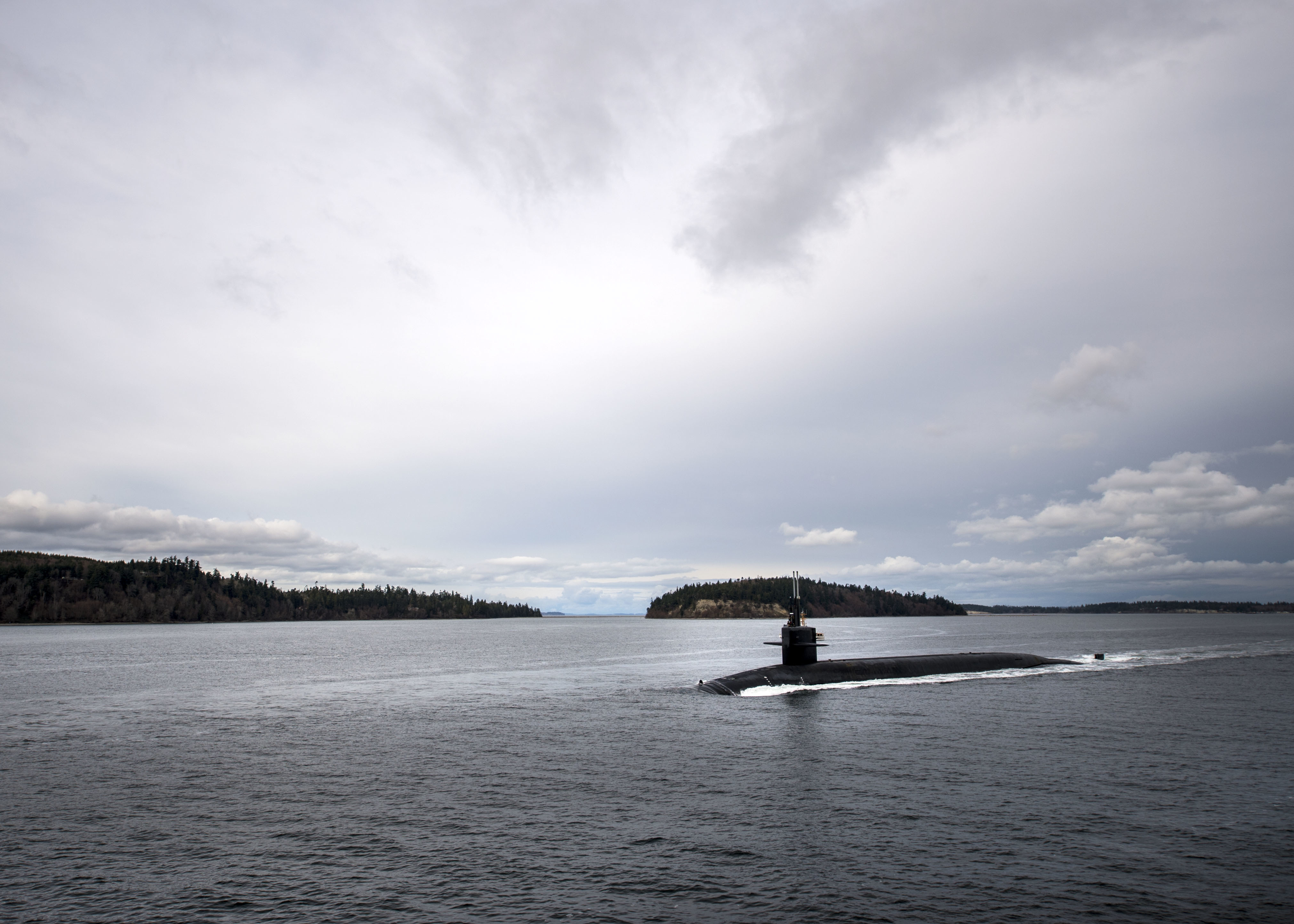
In February, nuclear ballistic missile submarine USS Louisana (SSBN-743) completed a mid-life refueling overhaul – the last for the Ohio-class submarines.
“Louisiana will be the last. The long availabilities are complete,” Vice Adm. Johnny Wolfe told the Senate Armed Services strategic forces subcommittee on Tuesday.
Now, as the Ohios are set to depart the service, “Columbia-class is the priority,” Wolfe said.
“We’re going to have challenges” in meeting submarine production demands and keeping weapons systems modernization and delivery in synch with ship construction, Wolfe said.
“Most U.S. nuclear deterrent systems – including the SSBN fleet – are operating beyond their original design life. Replacement programs are ongoing, but there is little or no margin between the end of useful life of existing programs and the fielding of their replacements. As noted by the 2022 NPR [Nuclear Posture Review], we need to fully fund the Columbia class SSBN program to deliver a minimum of 12 boats on time, as the Ohio Class SSBNs begin to retire. We also need to continue to prioritize near-term investments in the submarine industrial base, Ohio-class sustainment and the second life extension of the TRIDENT II D5” missile, Wolfe wrote in his prepared testimony.
“On-time delivery” has become increasingly challenging.
USNI News reported last month that Navy Secretary Carlos Del Toro told House appropriators that the Virginia-class attack boats program is “significantly behind” schedule.
The Navy’s plan was to build one Columbia-class sub and two Virginia-class per year, but the plan did not take into account deliveries to Australia.
General Dynamics Electric Boat and Huntington Ingalls Industries Newport News shipyards are the only yards capable of building nuclear-powered submarines. Instead of two Virginia-class per year, the Navy reported they are delivering 1.2 boats.
Testifying on an earlier panel at the same hearing as Wolfe, Vice Adm. James Caldwell, deputy administrator for naval reactors at the National Nuclear Security Administration, said his program “is delivering the life-of-the-ship reactor core and the electric drive propulsion system for Columbia.”
Panel Chairman Sen. Angus King, (D-Maine) noted that importance in the hearing. That reactor eliminates the need for a refueling overhaul over its 40-year life cycle. It also allows the Navy to field 12 ballistic missile submarines rather than 14 since extended yard periods won’t be needed, he said.
At the beginning of the year, the chairman and then-ranking member of the Senate Armed Services Committee expressed their concerns over shipyard space and workforce availability with the pending delivery of submarines to Canberra under the Australia-United Kingdom-United States [AUKUS] agreement.
Wolfe said the Navy is investing more than $2.4 billion over the next five years in modernizing and expanding yards. Rep. Joe Courtney, (D-R.I.), ranking member of the House Armed Services Seapower and Projection Forces panel, often said capacity ”is the biggest constraint” in growing the fleet.
Adding to construction challenges is a diminished and aging workforce in the nation’s shipyards. “We face the same challenges” in recruiting and retaining new workers in strategic systems, as does Caldwell with nuclear reactors, Wolfe said.
The strategic systems program “does not have the benefit of a healthy industrial base that comes from maintaining production and continuous development,” he said in written testimony. He noted the Navy has not called for a key component – integrated aeroshell – since the 1980s. The Navy needs to “re-invigorate a production capability that only reside in a small cadre of highly skilled experts in an exceptionally niche industry.” The aeroshell, also used by the Air Force and the United Kingdom, is the outer protective covering for warheads as they move through the atmosphere.
Members noted this was the 60th anniversary of the Polaris Sales Agreement that allowed sharing of nuclear propulsion and weapons technology with the United Kingdom and compared it to AUKUS.
“Let there be no doubt – AUKUS is a tremendous addition to my existing mission. …My program will be a key element of [its] success,” Caldwell said in written testimony. He added in oral testimony that “it will require a generational investment in people, nuclear technologies and facilities.”
Caldwell said there have been “incredible interactions” with the Australians during the 18-month consultation period from the date AUKUS was announced. “Stewardship” has been emphasized in handling nuclear technology safely and the need for governance and regulatory guidance. He added that has been “inherent in every part of the process.”
Six junior Australian naval officers are completing nuclear reactor school in Charleston, S.C., and will be assigned to American submarines. Caldwell said they will be given opportunities to learn on nuclear submarine operations with the United as they advance in rank.
He added the same holds true with Australians now assigned to the Royal Navy.





